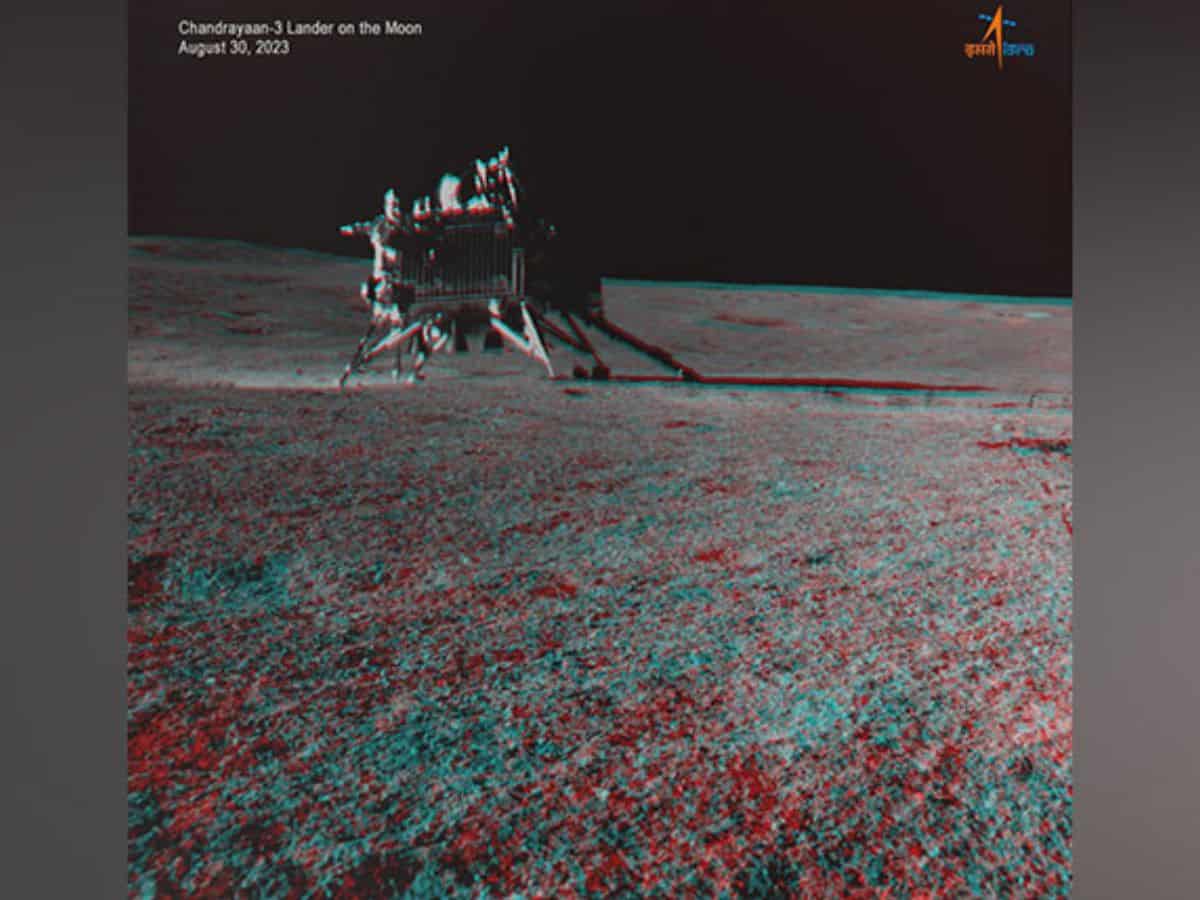
New Delhi: When the Vikram lander of the Chandrayaan-3 mission made a soft landing on the moon it raised a lot of dust that led to creation of a bright patch, called as the ejecta halo, around the spacecraft, the ISRO said on Friday.
According to a research paper published in the Journal of the Indian Society of Remote Sensing, scientists at ISRO used the Orbiter High Resolution Camera (OHRC) onboard the Chandrayaan-2 orbiter to study the lunar surface hours before and after the soft-landing of Vikram lander on the moon on August 23.
“During the action of descent stage thrusters and the consequent landing, a significant amount of lunar surficial epiregolith material got ejected, resulting in a reflectance anomaly or ‘ejecta halo’,” scientists at the National Remote Sensing Centre (NRSC) said in the paper.
They estimated that the landing event had ejected 2.09 tonnes of lunar regolith over 108.4 square metre area.
The scientists examined pre-and post-landing images of the landing site acquired from the OHRC onboard Chandrayaan-2 orbiter.
“The Vikram lander’s position is seen as a centrally located brightened spot on the image due to reflection from the lander’s on-body solar panels. The shadow of the lander is seen as an elongated oval-shaped dark patch towards the left of the lander,” they said in the paper.
“Associated with these two features is the veneer of the ejecta halo, which appears as an irregular bright patch surrounding the lander, as seen clearly in the post-landing OHRC image,” they reported.
According to the scientists, studying soil erosion due to rocket exhaust on the Moon is important as the ‘off-surface ejecta’ material can potentially threaten lander/rover onboard instruments.
During the touchdown phase of the Vikram lander, the ejecta displacement could be seen from the lander’s Landing Image Camera (LIC).
The ejecta halo phenomenon has been documented in the case of almost all lunar landings, more so from the Apollo landing missions which had considerably heavy landers.
The first documented evidence of the ejecta displacement was during the Apollo 11 mission when astronaut Buzz Aldrin commented “picking up some dust” when the Eagle lander touched down on the lunar surface on July 20, 1969.
During the Apollo-11 mission de-brief, Aldrin said he noticed that the lander was disturbing the dust on the surface and it was something less than 100 feet from the lunar surface.

